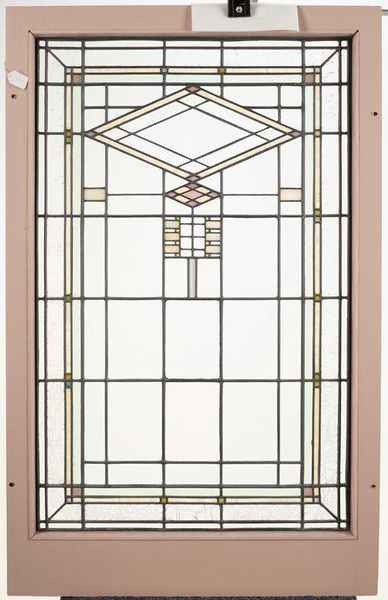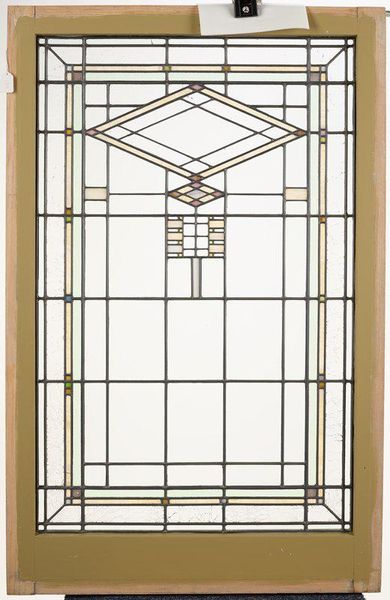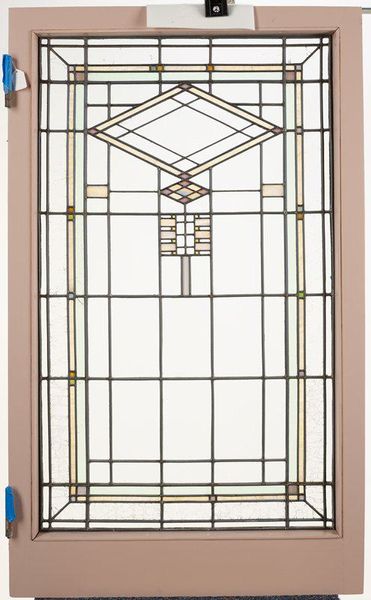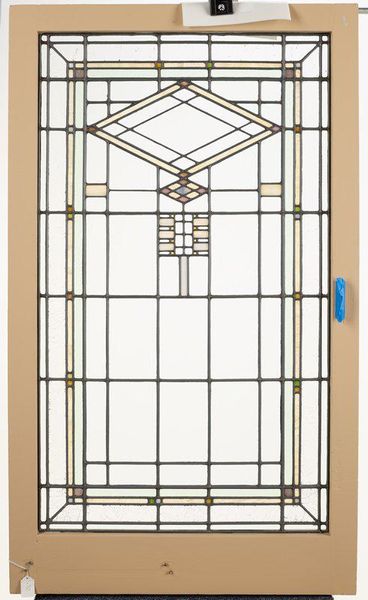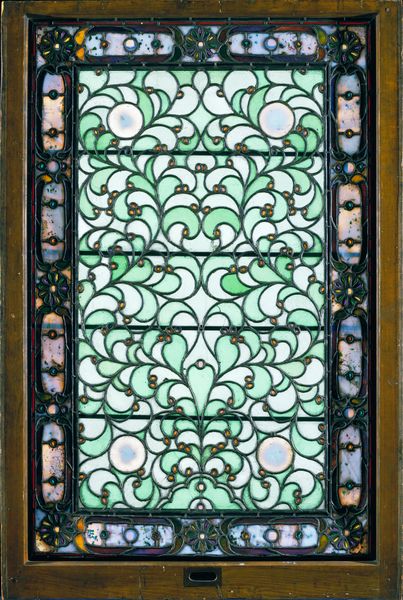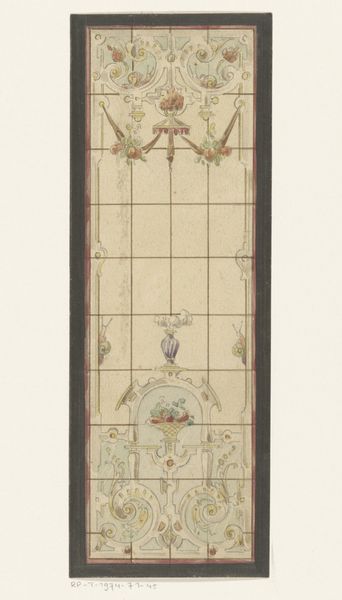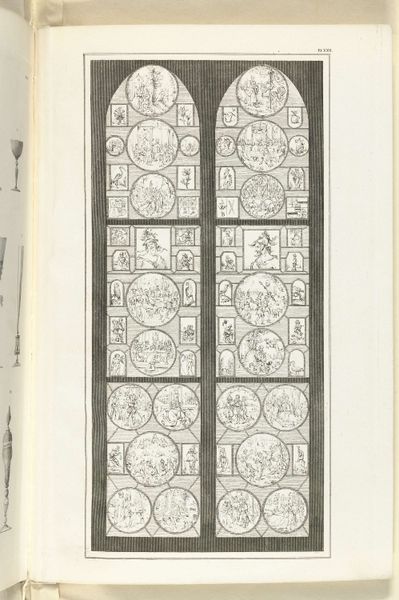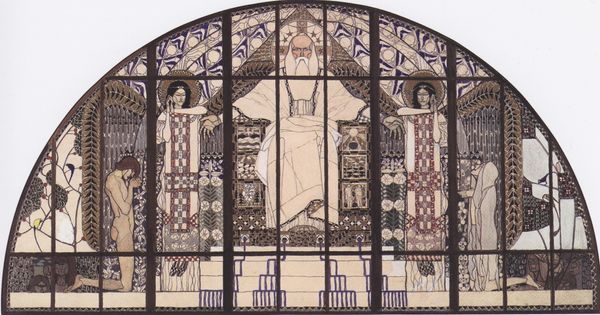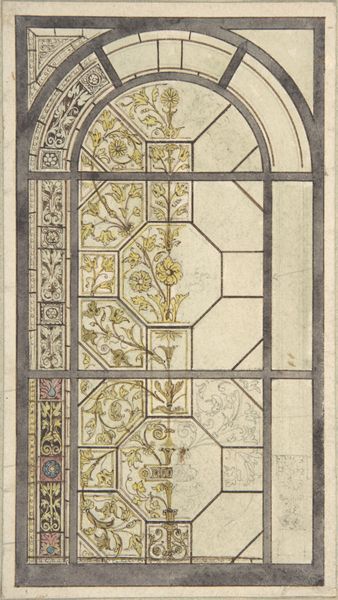
glass, architecture
#
art-nouveau
#
geometric pattern
#
glass
#
geometric
#
united-states
#
decorative-art
#
architecture
Dimensions: 41 x 24in. (104.1 x 61cm)
Copyright: No Copyright - United States
Editor: So this is "Window" from around 1913 by William Gray Purcell, currently residing at the Minneapolis Institute of Art. It's glass work and what I first see is an incredible geometric symmetry. It almost feels like a deconstructed building. What strikes you about this piece? Curator: The inherent architectural quality certainly commands attention. But beyond mere representation, note how Purcell masterfully manipulates line and shape. The diamond motif, for example, isn’t merely decorative. Consider how its angularity is echoed and re-scaled throughout the entire composition, creating a formal visual echo that promotes a sense of harmony. Editor: So it's less about the window's function, and more about how those shapes interact with each other? Curator: Precisely. Consider the colour palette. The subtle use of pastel hues against a predominantly clear glass field. How does this restraint enhance or diminish the overall formal impact? Are those individual glass segments creating patterns or ruptures? Editor: I see what you mean. The very muted colours make the clear glass the dominant color, adding to its airy, almost ethereal quality, a stark contrast with the strong geometric structure that seeks attention in itself. The segments become articulations of void within that structure. Curator: Indeed. And note how that central vertical axis grounds the more volatile, angular forms. Purcell has created a sophisticated interplay between structure and light. This interplay shapes our reading of this design. Editor: So by focusing on line, shape, and color, you almost remove the context of "window" and arrive at its very structural essence? Curator: Exactly! We strip away the extraneous and examine the bones, the inherent framework. This distillation reveals the artist’s primary concerns. How about you? Did this formalism reveal any insight to you? Editor: Absolutely. I’ll never see a window the same way! Looking beyond its practical use and examining its formal elements really changes the perspective and makes it far more thought-provoking.
Comments
No comments
Be the first to comment and join the conversation on the ultimate creative platform.


